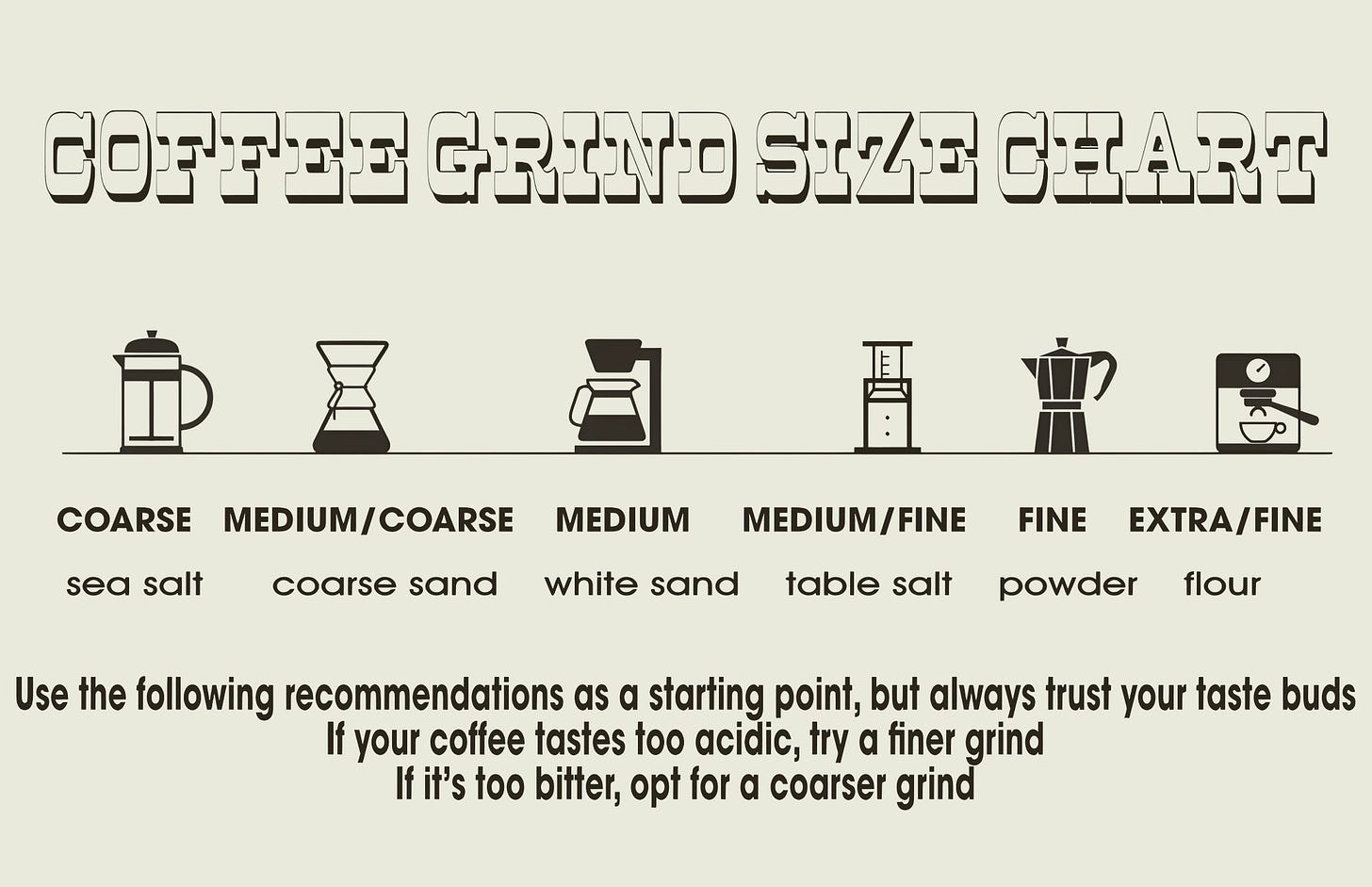Precision in Brewing: The Definitive Guide to Coffee Grind Techniques
At Tiny Earth Impact, we believe that freshness is the cornerstone of an exceptional coffee experience. That’s why we exclusively offer whole beans. By selling whole beans, we ensure that every customer can grind their coffee just before brewing, maximizing flavor and aroma. This commitment to quality not only enhances your coffee ritual but also supports sustainable practices, allowing you to savor the full, rich essence of our ethically sourced beans.
For coffee enthusiasts and connoisseurs alike, the grind size of your coffee beans is a pivotal element that can dramatically influence the flavor and overall quality of your brew. While many focus on sourcing high-quality beans, understanding the nuances of grind size is equally essential for achieving a perfect cup. This guide will delve into the various types of coffee grinds, their specific applications, and how they affect the brewing process.
The Importance of Grind Size
Each brewing method extracts flavor differently, and the grind size determines how quickly and evenly that extraction occurs. Selecting the appropriate grind not only enhances flavor but also ensures a balanced brew, avoiding bitterness or under-extraction.
Types of Coffee Grinds
Whole Beans
Overview: Though not a grind, whole beans are the foundation of fresh coffee. Grinding them immediately before brewing maximizes flavor retention.
Recommendation: Invest in a high-quality burr grinder for uniformity and precision in your grind size.
Coarse Grind
Texture: Resembles sea salt.
Best for: French press, cold brew, and percolators.
Why it works: Coarse grounds facilitate a slower extraction process, allowing rich flavors to develop without the bitterness associated with over-extraction.
Medium-Coarse Grind
Texture: Similar to rough sand.
Best for: Chemex and certain pour-over methods.
Why it works: This grind strikes a balance, enabling a moderate extraction time that results in a smooth, well-rounded flavor profile.
Medium Grind
Texture: Comparable to granulated sugar.
Best for: Drip coffee makers and pour-over techniques like the Hario V60.
Why it works: A medium grind offers versatility and consistent extraction, making it a popular choice for various brewing methods.
Medium-Fine Grind
Texture: Slightly finer than medium, akin to table salt.
Best for: Aeropress and select pour-over methods.
Why it works: This grind size allows for quicker extraction, delivering an intense flavor without crossing into bitterness.
Fine Grind
Texture: Resembles powdered sugar.
Best for: Espresso machines and Moka pots.
Why it works: The fine grind maximizes surface area, facilitating rapid extraction necessary for creating a rich and concentrated espresso.
Extra Fine Grind
Texture: Almost powder-like.
Best for: Turkish coffee.
Why it works: The extra fine grind allows for optimal extraction, yielding a robust and distinctive coffee with a unique texture.
Selecting the Right Grind
Choosing the appropriate grind size is vital to achieving your desired flavor profile. Here’s a quick reference guide:
French Press: Coarse
Chemex: Medium-Coarse
Drip Coffee Maker or Percolator: Medium
Aeropress: Medium-Fine
Moka Pot: Fine
Espresso: Fine
Mastering the art of coffee grinding is a crucial step in elevating your coffee experience. By understanding the different grind sizes and their corresponding brewing methods, you can experiment to find the perfect balance for your palate. Remember, fresh beans paired with the right grind size can transform an ordinary cup into an extraordinary one. Embrace the nuances of coffee brewing, and enjoy every sip of your meticulously crafted brew!








